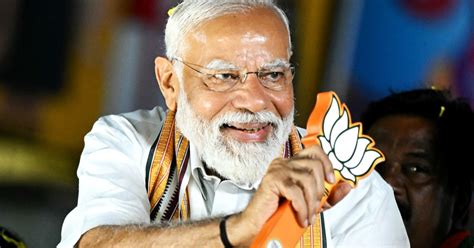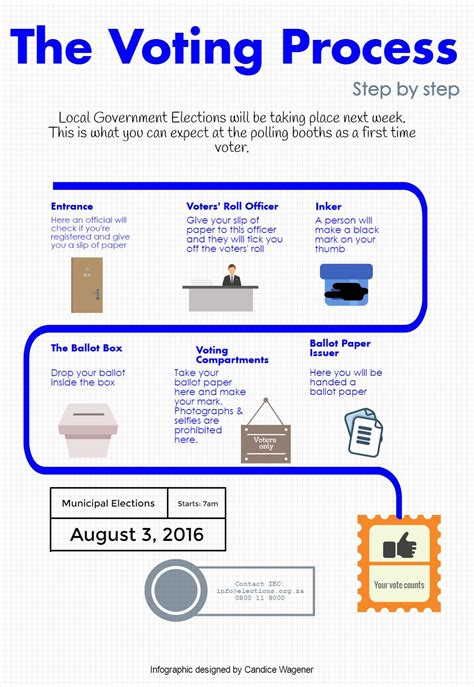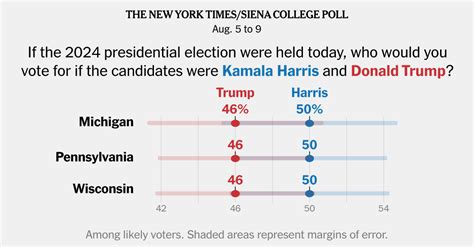Explore the importance of swing states, their historical role in elections, demographic influences, and future trends, along with frequently asked questions.In the complex landscape of U.S. elections, swing states play a pivotal role that can ultimately determine the outcome of presidential races. These states, characterized by their lack of predictable voting patterns, often sway between Democratic and Republican candidates, making them prime targets for campaign efforts and grassroots movements. Understanding the significance of swing states is essential for anyone interested in the dynamics of electoral politics. This article will delve into what swing states are, explore their historical context, examine how they influence election outcomes, and analyze the role of voter demographics within these key battlegrounds. Additionally, we will consider future trends and address common questions about the intricacies of swing state politics. Join us as we navigate the crucial impact of swing states on the electoral process.
What Are Swing States And Why They Matter
Swing States are pivotal locations in the U.S. electoral landscape, representing battlegrounds where neither major political party has a clear advantage. These states often play a critical role during presidential elections, as they can shift the overall outcome. Unlike states that consistently lean toward one party—be it Democrat or Republican—swing states have a history of fluctuating between support for both parties in different election cycles. This unpredictability makes them the focus of intense campaigning and strategic planning for both political parties.
The significance of swing states lies in their potential to alter the distribution of Electoral College votes. With a close national race, winning a handful of swing states can be the difference between victory and defeat. For instance, in the 2020 election, states like Pennsylvania and Wisconsin were considered vital swing states that determined the final outcome. Campaigns often devote significant resources—both financial and human—to mobilize voters and sway opinions in these areas.
Furthermore, swing states reflect a diverse electorate with varied demographics and political affiliations. This diversity often leads to unique challenges and strategies tailored to the specific issues that resonate in these regions. Consequently, understanding the dynamics of swing states is essential for grasping the broader electoral process and predicting future election outcomes.
Historical Overview Of Swing States In Elections
Swing states have played a crucial role in shaping the outcomes of U.S. presidential elections over the decades. These states are not consistently aligned with one political party, making them highly competitive and influential during election cycles. Understanding their historical significance offers insights into voting trends and shifts in political landscapes.
In the 1960s and 1970s, states like Illinois and New Jersey were considered prominent swing states. They demonstrated a mix of urban and rural voting patterns, often shifting allegiance between Democratic and Republican candidates. The 2000 election marked a watershed moment, highlighting swing states such as Florida, where a mere 537 votes determined the presidency.
Throughout the 2000s, other states like Ohio and Pennsylvania emerged as essential battlegrounds. These states showed varying demographics and economic factors influencing voter preferences. Analysts observed that changes in industries, such as manufacturing in the Midwest, significantly impacted voting behavior in these areas.
The rise of swing states in recent elections can also be attributed to population shifts and changing political affiliations. For example, states like North Carolina and Virginia have transitioned from solidly red or blue to competitive status, reflecting the dynamic nature of electoral politics.
As we move into the present, states such as Arizona and Georgia are gaining prominence as pivotal swing states, contributing to the ongoing evolution of voter demographics and political alliances. The historical overview of these states underscores their essential role in determining election outcomes and drives the strategies of political campaigns.
How Swing States Influence Election Outcomes
Swing states play a critical role in determining the overall outcome of elections in the United States. Unlike states that consistently vote for one political party, these states can change their allegiance from one election to the next, making them the focal points of presidential campaigns. Understanding how swing states influence election outcomes involves analyzing various factors, including voter sentiment, campaign strategies, and economic conditions.
One of the primary reasons swing states hold such importance is their unpredictability. Campaign teams often focus their resources—such as time, money, and advertisement—on these battlegrounds, recognizing that winning a handful of swing states can be the difference between victory and defeat. For instance, candidates may tailor their policies and messages to resonate more with the voters in these states, which can significantly shift the overall election dynamics.
Another key aspect is the demographic diversity found within swing states. These states often encompass a mix of urban and rural populations, varying socioeconomic statuses, and differing cultural backgrounds. As a result, candidates must navigate complex social issues and appeal to a wide base of constituents. Strategies may include targeted outreach efforts to specific communities or addressing local concerns that are not as prevalent in strongly partisan states.
Moreover, the Electoral College system amplifies the significance of swing states. Each state is allocated a number of electoral votes based on its population, and since most states employ a winner-takes-all system, winning a swing state can yield a substantial electoral prize. This drives candidates to invest heavily in persuasion tactics within these states, making the electoral landscape intensely competitive in the lead-up to elections.
Voter turnout in swing states can radically sway results. Mobilization efforts, voter registration drives, and ground campaigns are often prioritized in these states to ensure that supporters make it to the polls on Election Day. The fluctuating turnout rates in swing states demonstrate how critical each voter can be in shaping national outcomes.
The Role Of Voter Demographics In Swing States
The Swing States play a critical role in shaping electoral outcomes, and understanding the demographics within these states is essential for political strategies. Voter demographics encompass various factors, including age, ethnicity, income levels, education, and urban versus rural residence. Each of these elements can significantly impact voting behavior and party alignment.
One of the primary demographics to consider is age distribution. Younger voters tend to lean towards progressive candidates, while older demographics may favor more conservative platforms. This divergence can create swings in voter preference across different elections, making age a crucial factor in Swing States.
Ethnic diversity also plays a significant role. States with substantial minority populations often show more variability in their political preferences. For instance, areas with a high Hispanic or African American population may lean Democratic, while areas with a significant white constituency may support Republican candidates. Understanding these dynamics can help campaigns effectively target their messages.
Income levels and education have further implications. Generally, higher income voters tend to align with Republican policies, while lower-income voters may favor Democratic platforms. Similarly, higher educational attainment is often correlated with liberal voting patterns. Campaigns that acknowledge these differences can better tailor their outreach strategies.
Geographical factors cannot be overlooked either. Urban areas typically swing more Democratic, while rural areas lean Republican. The balance of these populations within a state can determine its status as a Swing State. Analyzing shifting demographics allows political parties to adapt their focus and resources effectively.
| Demographic Factor | Impact on Voting Behavior |
|---|---|
| Age | Younger voters lean Democratic, older voters often lean Republican. |
| Ethnicity | Minority groups may favor Democrats, white populations may favor Republicans. |
| Income Level | Higher income = more Republican; lower income = more Democratic. |
| Education | Higher education correlates with liberal voting. |
| Geography | Urban areas often vote Democratic; rural areas vote Republican. |
Voter demographics are fundamental to understanding the dynamics of Swing States. As such, campaigns must analyze these demographics meticulously, adjusting their strategies accordingly to influence outcomes in these pivotal regions.
Predicting Future Trends In Swing States
As the political landscape continues to evolve, understanding the future trends in Swing States becomes increasingly crucial. With changing demographics, shifts in party affiliation, and the influence of social issues, predicting how these factors will impact Swing States requires a multifaceted approach.
One significant trend is the growing impact of younger voters in Swing States. As millennials and Generation Z begin to enter the electorate in larger numbers, their preferences could drastically influence the outcomes of elections. Issues such as climate change, economic inequality, and social justice resonate strongly with these voter groups, and candidates will need to address these concerns to gain their support.
Another trend to consider is the increasing polarization of political beliefs. While Swing States are often characterized by their mixed political leanings, we may see a movement towards more firmly aligned partisan bases. This could lead to Swing States becoming less competitive over time, as voters flock to party candidates that align strictly with their ideological perspectives.
Additionally, advancements in technology and data analytics are shaping how campaigns approach voters in Swing States. Digital platforms allow for more targeted messaging, which can engage voters on a personal level, potentially swaying undecided constituents or reinforcing loyalty among supporters.
Moreover, ongoing shifts in population dynamics, such as urbanization and migration patterns, will further influence which states remain “swing.” States that attract a more diverse population might witness a transformation in political allegiance, shifting the Swing States landscape over time.
The recent surge in grassroots movements and local activism indicates that many potential voters are increasingly inclined to voice their opinions and take action, which could have impactful implications in future elections within Swing States. As these movements continue to grow, they might play a pivotal role in shaping electoral outcomes by mobilizing voters and influencing key issues.
While predicting future trends in Swing States is complex, acknowledging shifts in demographics, technology, political polarization, and grassroots activism provides valuable insights that can help stakeholders navigate the evolving political terrain.
Frequently Asked Questions
What are swing states?
Swing states, also known as battleground states, are those that do not consistently vote for one party in elections. Their outcomes can vary from one election to another, making them critical in determining overall electoral results.
Why are swing states important in elections?
Swing states are important because they can decide the outcome of presidential elections. Since these states can be won by either major political party, candidates focus their campaigns heavily on winning these areas.
How many swing states are typically identified in an election?
The number of swing states can vary from election to election, but it usually ranges from 5 to 15 key states that are deemed competitive based on polling data and voting history.
What factors can influence swing state outcomes?
Factors that influence swing state outcomes include demographic changes, economic conditions, local issues, party organization, and the candidates’ appeal to voters.
How do candidates typically campaign in swing states?
Candidates often prioritize swing states by visiting frequently, hosting rallies, engaging with local media, and tailoring their messages to resonate with the unique concerns of voters in those states.
What role do polls play in determining swing states?
Polls help identify which states are swing states by providing insight into voter preferences and trends. They can indicate shifting opinions that may influence the electoral strategies of candidates.
Can swing states change from one election to the next?
Yes, swing states can change from one election to the next due to various factors, including shifts in the electorate, major political events, or changes in economic circumstances.









